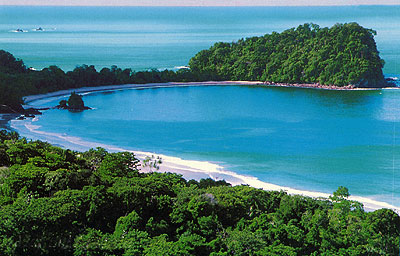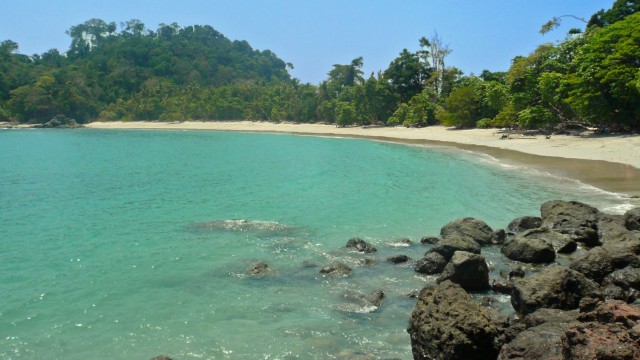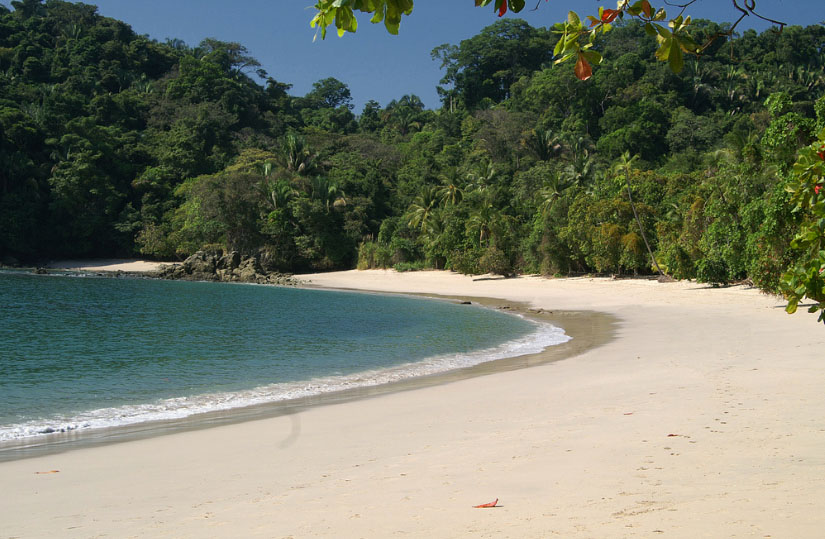Costa Rica ravel News – “HEY, you’re from Australia?” Our guide, Michael, picks up on my decidedly un-American accent immediately. “Where’s my koala? We could have done a trade.”
 We’re looking through the barrel of his telescope to get a closer look at the adorably furry, three-toed sloth tucked up in a tree, with a green tree frog also muscling into view. Affirming our tech-dependence, Michael offers to take snaps on our smartphones to capture the view through the lens.
We’re looking through the barrel of his telescope to get a closer look at the adorably furry, three-toed sloth tucked up in a tree, with a green tree frog also muscling into view. Affirming our tech-dependence, Michael offers to take snaps on our smartphones to capture the view through the lens.
Sure, we may have koalas back home, but these tree-dwelling, terminally sleepy mammals reserve a level of cuteness all to their own.
We’re less than 10m inside Manuel Antonio National Park – a beautiful little slice of rainforest on an outcrop of the Pacific coast in Costa Rica – and already my wildlife-spotting mission is complete.
On this leisurely morning stroll we see fruit bats, iguanas, snakes, white-faced monkeys, raccoons and even a sprightly doe playing in the beachside Eden. After learning there are 109 different species of mammals and 184 species of birds cohabiting in harmony here, it’s not hard to feel like a small blip in the ecosystem.
But the piece de resistance comes as the track widens and opens up to a protected bay of white sand and warm, inviting, cerulean ocean.
Playa Manuel Antonio was recently named in the Top 25 beaches in the world in TripAdvisor’s Travellers’ Choice Awards and any beachgoer can see why.
While this is one of Costa Rica’s smallest national parks, it is undoubtedly its most popular, thanks in part to not one but four glorious beaches and activities ranging from snorkelling to white water rafting and horseback riding. But here, within the confines of the national park, it’s still possible to claim a private-enough patch of sand to while away the day.
Costa Rica is to Americans what Bali is to the Aussies, with its minimal flight time from the US, accommodating tourist visa and bountiful mix of adventure and beaches.
But while some pockets verge on being the next Kuta, the rest of the country is drop dead gorgeous, and  though its landmass is literally a tiny drop in the world ocean puddle, it manages to pack five per cent of the entire planet’s biodiversity into its borders.
though its landmass is literally a tiny drop in the world ocean puddle, it manages to pack five per cent of the entire planet’s biodiversity into its borders.
Sitting pretty between Nicaragua and Panama, and having the advantage of facing both the Caribbean and Pacific coastlines, thankfully the powers that be have realised the importance of its assets and a quarter of the country has been committed to conservation.
There’s even a sign at the airport arrivals gate proclaiming “Welcome to the friendliest country on earth”, which I quickly learn is a fact.
While Manuel Antonio boasts the national park, beaches and luxury resorts, it would cease to exist without its sister town of Quepos. As a first-time gringo, Quepos (pronounced K-pos) provides an easy introduction to everyday Central America.
The four to five block “CBD” is abuzz with all manner of daily tasks from banking to laundry and grocery shopping. It’s where fishermen flaunt their daily catch from the handlebars of their bikes and locals gather to watch soccer games with a bottle of Imperial lager in hand.
It’s where the locals who work in the neighbouring resorts live.
This is the beating heart of the region and if you look past the souvenir shops you’ll discover charming farmers’ markets along the waterfront on Friday nights and Saturdays, cheap and cheerful restaurants, fun local bars and great coffee. You’ll also find local women sitting on almost every street corner hawking lottery tickets – the outcome and odds of this lottery are dubious, but trying your luck is part of the fun.
I learn there are two religions in Costa Rica – one is worshipped in the west-facing church and the other on the soccer field that sits next door. Both form the blank canvas of every town, with everything else painted around them, and Quepos is no exception.
Our Manuel Antonio guide Michael explains the name Quepos comes from the indigenous word “Quepo”, meaning rainmaker, so given because it “used to rain as heavy as cats and dogs from the sky”. In fact, sitting at a metre below sea level, this area used to be wetlands, and only after a long levee was built did the town establish itself and escape the constant barrage of 3m tides.
From downtown Quepos, it’s roughly 4km to the beach in Manuel Antonio and the journey comes with plenty to see, and a smattering of cute cafes to stop in at. If you’re feeling adventurous and want to walk off an empanada binge, it’s great exercise. However, the local bus makes it too easy to skip out on any strenuous activity at around 75¢ each way.
BY CELESTE MITCHELL Escape.com.au
“Like” Escape.com.au on Facebook
Follow @Escape_team on Twitter

